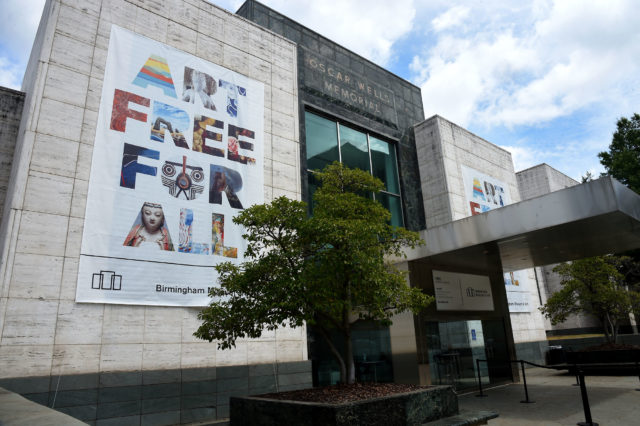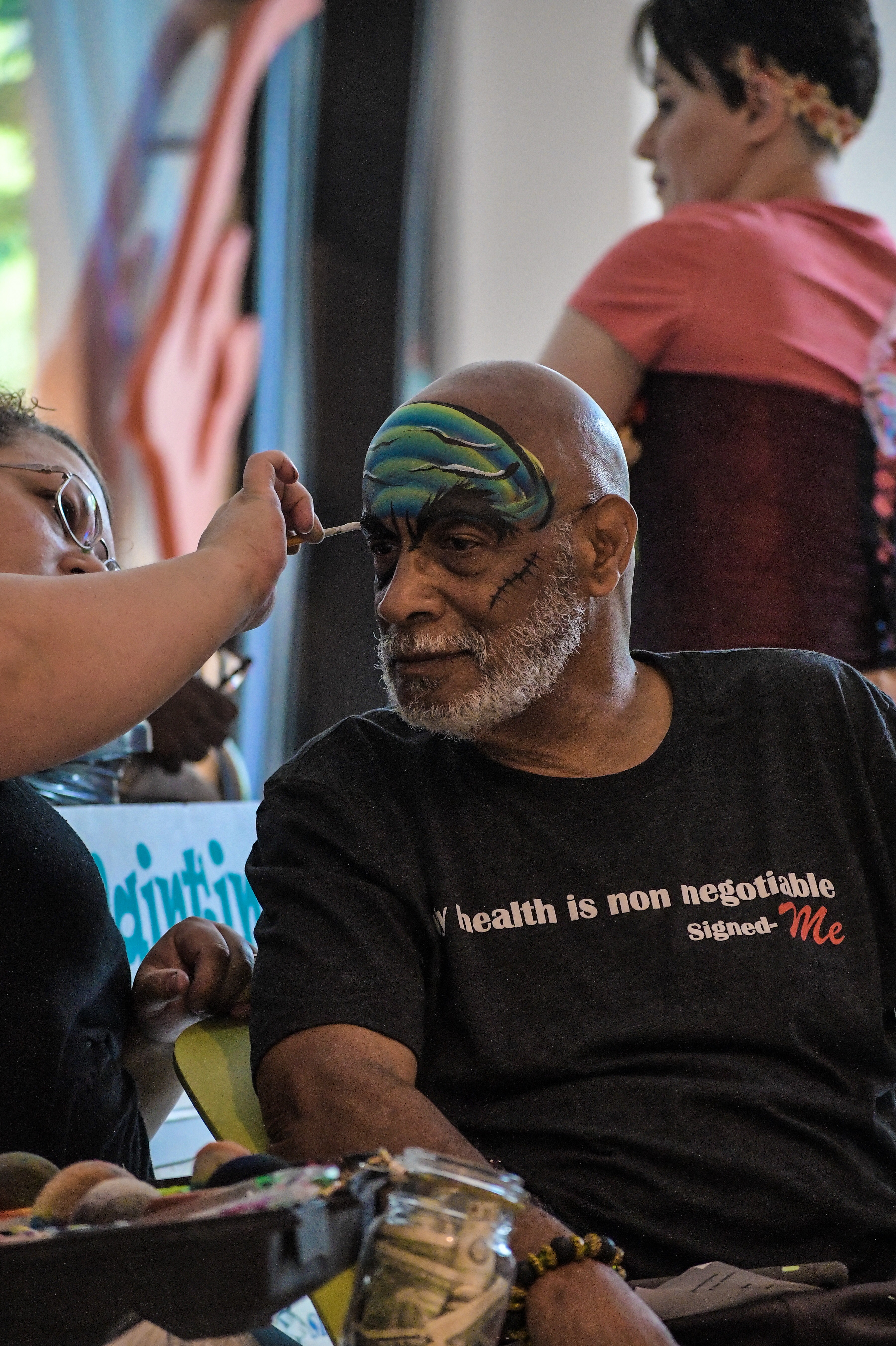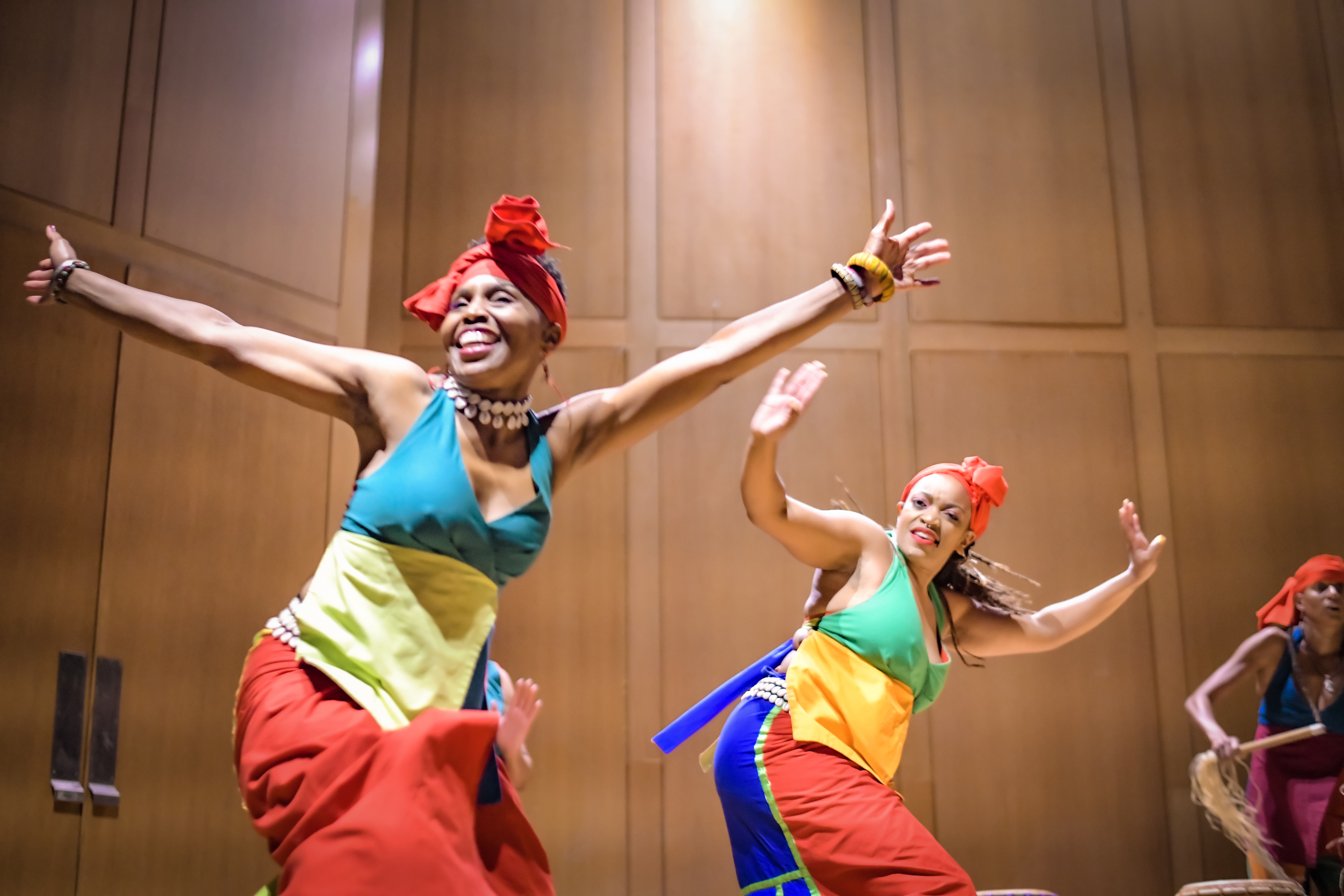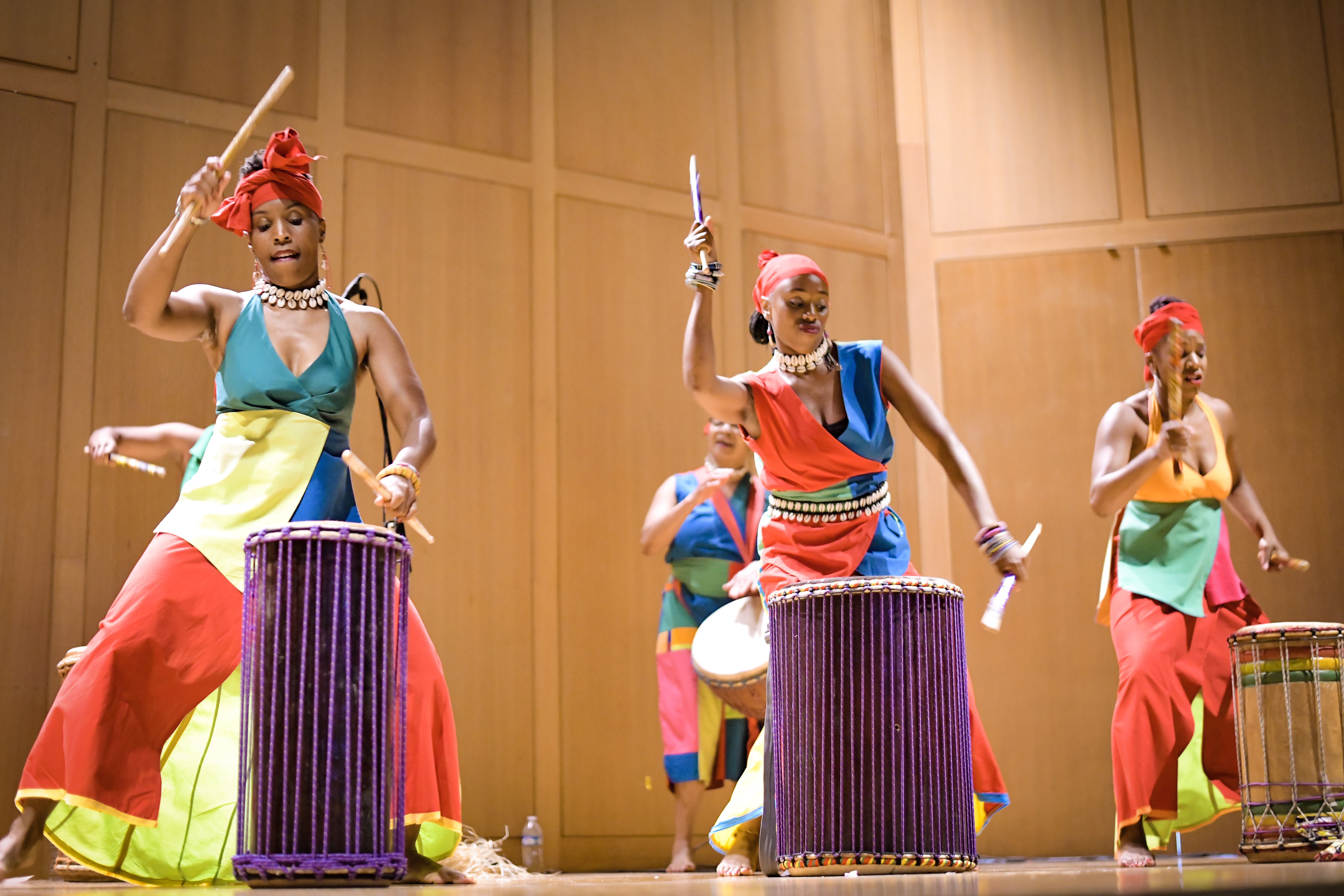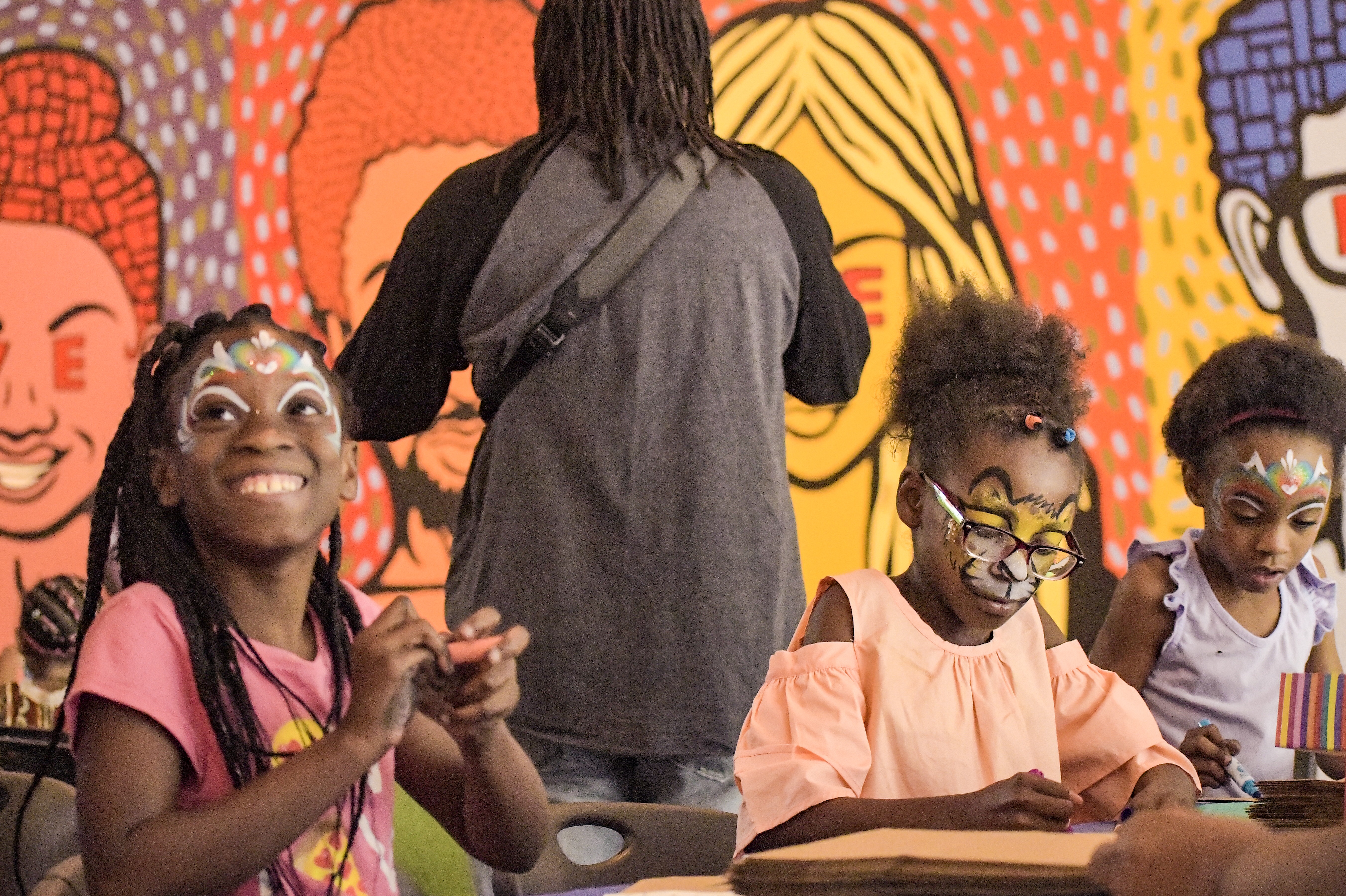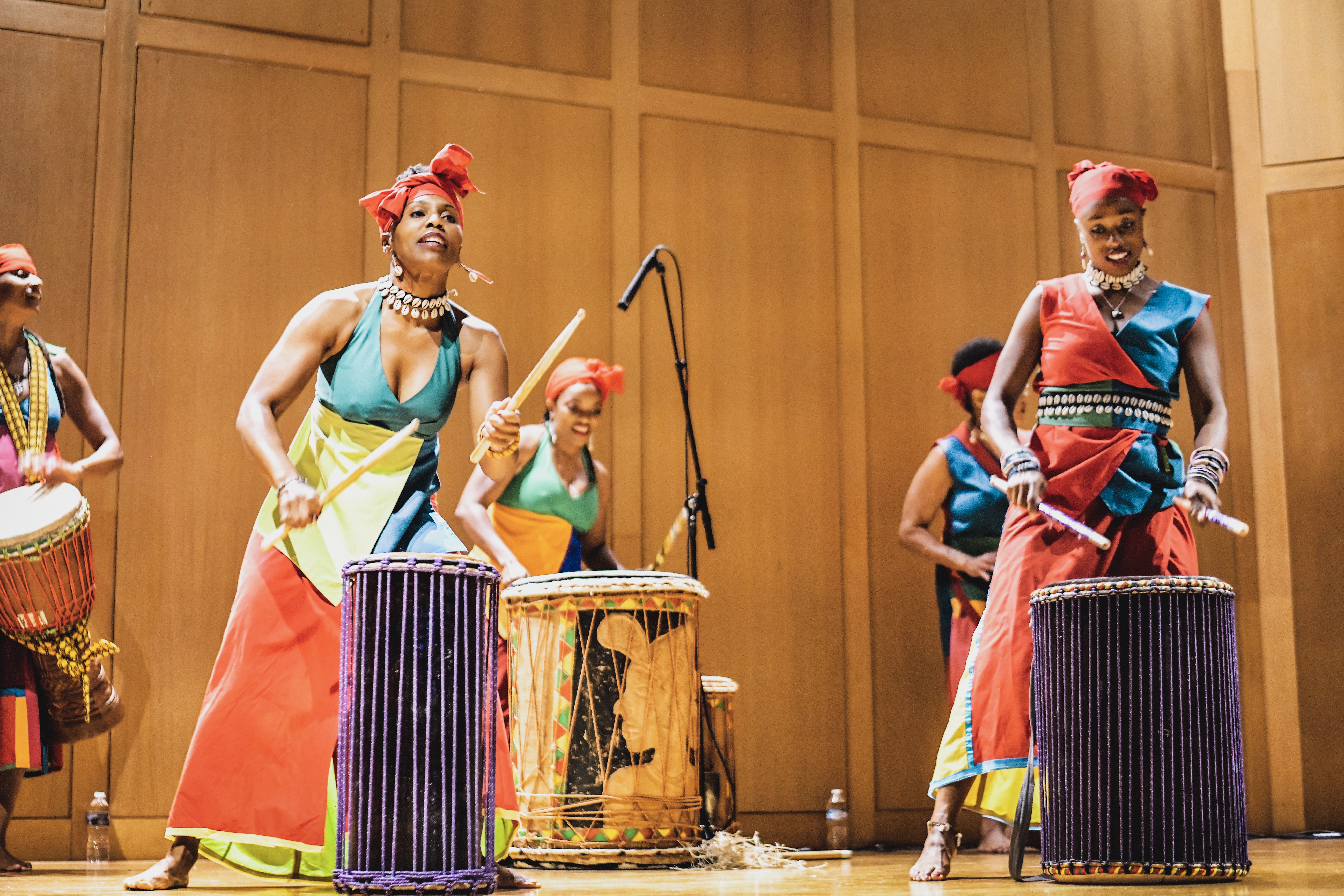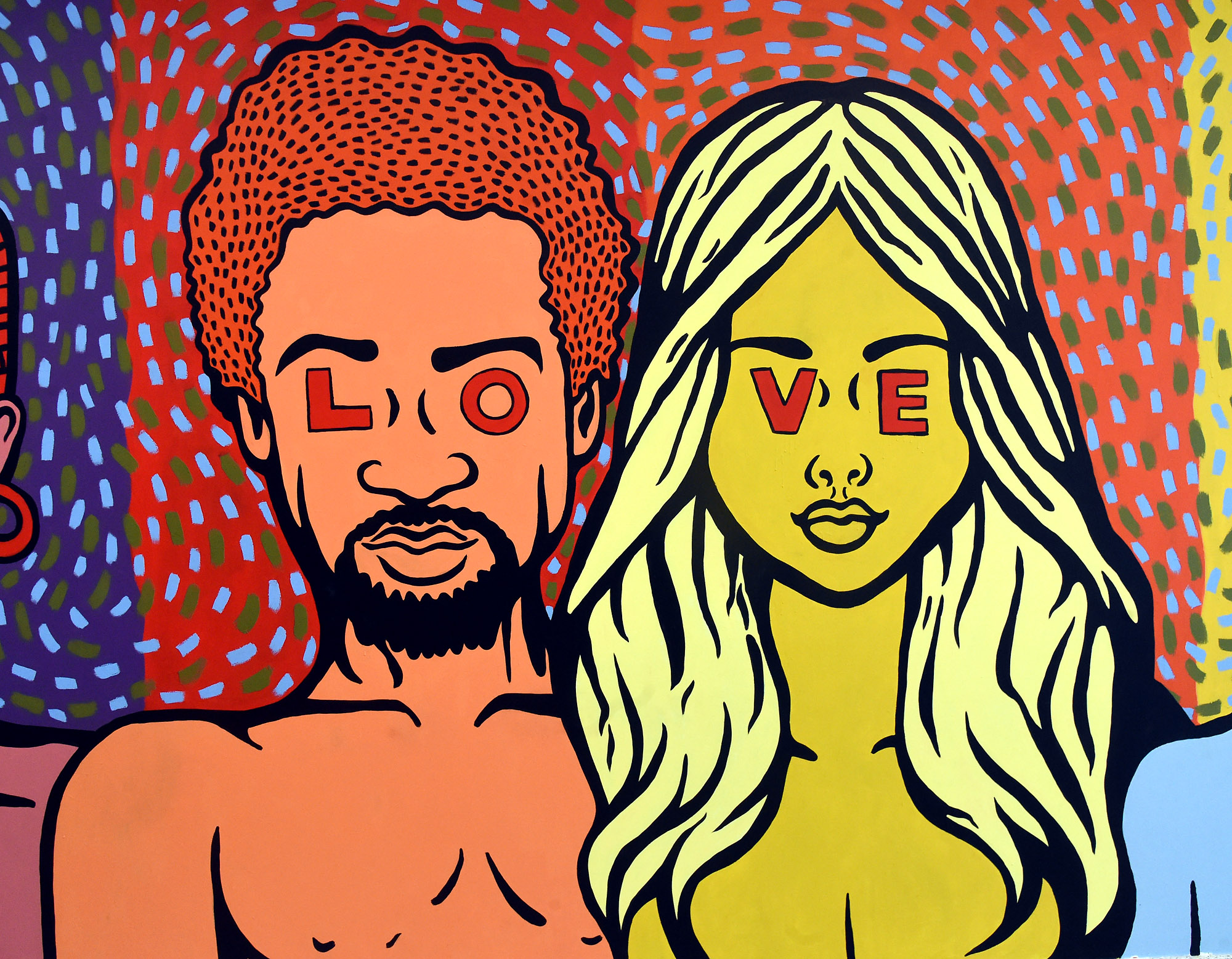By Erica Wright
The Birmingham Times
During a recent visit to the Birmingham Museum of Art (BMA) downtown, Jonathan Harrell paid close attention to a photograph of a black woman and a child standing in front of a store on a busy street underneath a sign that reads “Colored Entrance.”
The image, taken by the eminent photographer Gordon Parks in 1956 and known as “Department Store, Mobile, Alabama,” documents separate entrances for blacks and whites during the segregation era in the Deep South.
History is one of the reasons Birmingham resident Harrell frequently visits the BMA.
“I like the rotating exhibits they have, [so I] come to see what’s new and what they have coming next,” he said. “I’ve always had an appreciation for art and music. … Things like this relax me. [They also get me] thinking about social topics and just appreciating good art.”
Museum officials have worked tirelessly to create a space where all visitors, like Harrell, feel welcome and can develop an appreciation for art.
Graham Boettcher, PhD, R. Hugh Daniel Director of the BMA, said his “goal, and the goal of my predecessors, is to make it crystal clear to everyone that this museum belongs to the people it serves and that we are here to serve,” he said.
“My goal is to be of service to the community and to always strive to create a place that’s welcoming, inviting, [and] very much in alignment with the city’s value of [providing] customer service to the community.”
The BMA—located at 2000 Rev. Abraham Woods Jr. Blvd., Birmingham, AL 35203—attracts more than 125,000 visitors a year, and that number continues to grow.
Boettcher, who has worked at the museum for 13 years and has served as director for almost two years, said he’d like to get to about 185,000 [visitors a year].
“Based on the growth we’re seeing, I think this is attainable,” he said. “The beauty of all of this is that we are a free museum. We do sometimes have special ticketed exhibitions, but even when we have those, the rest of the museum is free and open to the public. That’s something I’m committed to.”
Inclusive and Diverse
The BMA, founded in 1951, has more than 27,000 paintings, sculptures, prints, drawings, and decorative pieces representing diverse cultures: Asian, European, African, American, Pre-Columbian, Native American, and others. The facility, which is owned by the city of Birmingham, encompasses 3.9 acres in the heart of the city’s cultural district, which is home to the museum, the Alabama School of Fine Arts, the Boutwell Auditorium, and the Birmingham Jefferson Convention Complex (BJCC).
The museum began in City Hall in 1951 and moved to its current location eight years later. Like many other Magic City institutions, it was not open to people of color during that period. In fact, it wasn’t until the 1970s that the building was open for all.
“Black people were only allowed in this institution one day a week from the time it opened its doors in [the present location] in 1959 until Jim Crow laws were repealed in the 1960s,” said Boettcher.
“We are a city museum, and we belong to the people of Birmingham. It’s very important to me that people feel that sense of ownership.”
The director pointed out that the museum’s art once lacked diversity, as well. The BMA acquired its first work by an African American 20 years after it was founded—a Henry Ossawa Tanner painting donated by a Birmingham woman who had lived in Paris and knew the artist personally.
“That was given to us in 1971,” said Boettcher. “The following year, we purchased our first work by a living African American artist: a work by David C. Driskell, who had been on the faculty at Talladega College in the late 1950s and early 1960s.”
Festivals
In addition to ensuring inclusivity and diversity through its exhibits, the BMA also hosts a broad range of festivals highlighting different cultures.
For the first time this year, the museum presented its African Heritage Festival. This successful event, which celebrated vibrant traditions and cultures of regions throughout the African diaspora, recognized African heritage through art, crafts, music, and dance. The festival showcased art from the BMA’s African gallery, including pottery, textiles, masks, headdresses, and print-making materials.
The BMA also has held Indian, Hispanic, and Asian heritage festivals.
“The Indian community has grown in Birmingham, and one group—the Indian Cultural Society—has adopted the museum as its cultural home,” said Boettcher.
One event, in particular, was very well received: the 9th Annual Holi: A Festival of Color, which was held in March. According to the museum’s website, “Nearly 2,500 guests came out to enjoy this traditional Indian holiday, which celebrates the arrival of spring.”
The success of Holi led to other family festivals, which have become some of the BMA’s best attended events.
“We try to have those regularly throughout the year,” said Boettcher. “We want to make sure we are creating programming that is going to be of interest to the people of Birmingham. I think we have a really outstanding team of curators and educators, and they’re doing a great job of that.”
Events and Programs
Also popular are the BMA’s events and programs, including Art on the Rocks, which began in 2004. This art-centered entertainment event, held on Friday nights during the summer months, features live music, DJ dance parties, artist demos, and interactive mural making.
“[Art on the Rocks] continues to evolve,” Boettcher said. “What I observed at the last one is an event for the whole city. It feels like it’s matching my vision for the museum: people taking ownership of the museum and really making it their place to come and have a good time with friends and their family.”
Another event, Art After Five, is held the first Friday of each month; it will run from September through April and feature art and music activities.
“Each one of those has a theme,” said Boettcher. “We’ve done a summer camp and one for [college basketball’s] March Madness. … We did a ‘Galentine’s Day,’ [a play on Valentine’s Day, during which a group of women celebrate the holiday as friends]. … This was popular, and we’ve seen attendance grow because we haven’t been afraid to rethink the event. At first it took a while to take root, and then we just started thinking outside the box. It is now an event that [provides] a different experience than if you were to come to the museum on a regular day for a visit.”
What Visitors Think
Speaking of visiting, the BMA’s myriad attractions keep regulars coming back and draws new ones.
“I actually go to the website and see what they have. If I haven’t seen it, I like to come and check it out,” said Harrell, who typically visits the museum once a month and sees something different every time. “I didn’t even know we had so many social-justice contexts in the pieces. I visit the American section a lot, though. When [the special exhibition ‘Third Space: Shifting Conversations about Contemporary Art] was here, I looked at that one a lot, but I mostly look at the African works or works by African American artists.”
Janet Jordan of Jasper, Ala., recently visited the museum for the first time and was moved by the paintings and photographs.
“There are so many different art pieces, including [those that show] how our ancestors lived and dressed. Everything … was so ornate. It’s exciting to see even the frames that are carved, so gilded and beautiful,” she said.
Another first-time visitor, Elise Fromularo from Pensacola, Fla., is an avid art lover. She was intrigued when passing through downtown Birmingham one day and noticing the museum.
“I’ve gone to museums at home, and when I go to New York City, I like to go to the [Metropolitan Museum of Art]. … I didn’t realize that [the BMA] was so big. I looked it up and decided to come,” she said.
What did Fromularo find?
“[The BMA] is not just focused on one time period or on one culture,” she said. “It [has] a broad amount [of works] with different acrylics, oils, sculptures, and different wares, such as furniture pieces. Not all museums have that, and I like that. I’m enjoying learning about all of the different cultures, as well.”
The Birmingham Museum of Art is open Tuesday through Saturday, from 10 a.m. to 5 p.m., and Sunday, from noon until 5 p.m. For more information, call 205-254-2565; visit www.artsbma.org; or follow on Facebook @Birmingham Museum of Art and on Twitter and Instagram @Bhammuseum.
To read more stories about the BMA, click one of the links below
BMA’s Barbie Exhibit: How Society Views Beauty and Women of Color
After Overseeing Dozens of Exhibitions, Curator Emily Hanna Ready To Arrange Her Own


